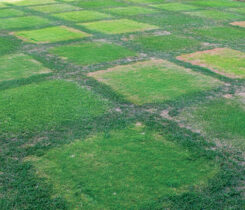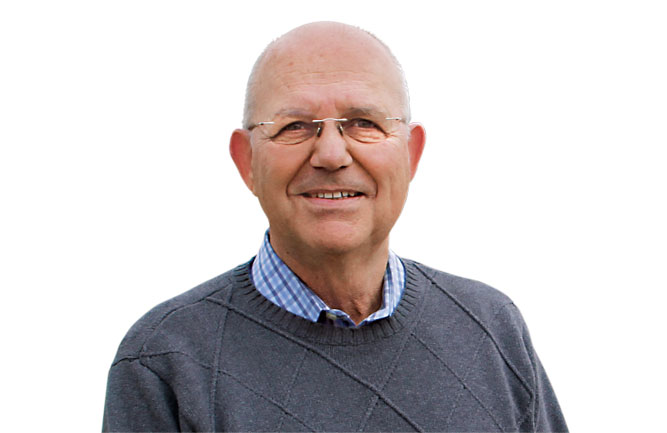A look at the research projects we highlighted this year in Golfdom
Another year is ending, and we have a new list of great research articles logged for Golfdom. We thank all our authors for working closely with us to bring you their research results. What I like about the digital world is that you can click on the title and have the article up in seconds. All the best for 2023!
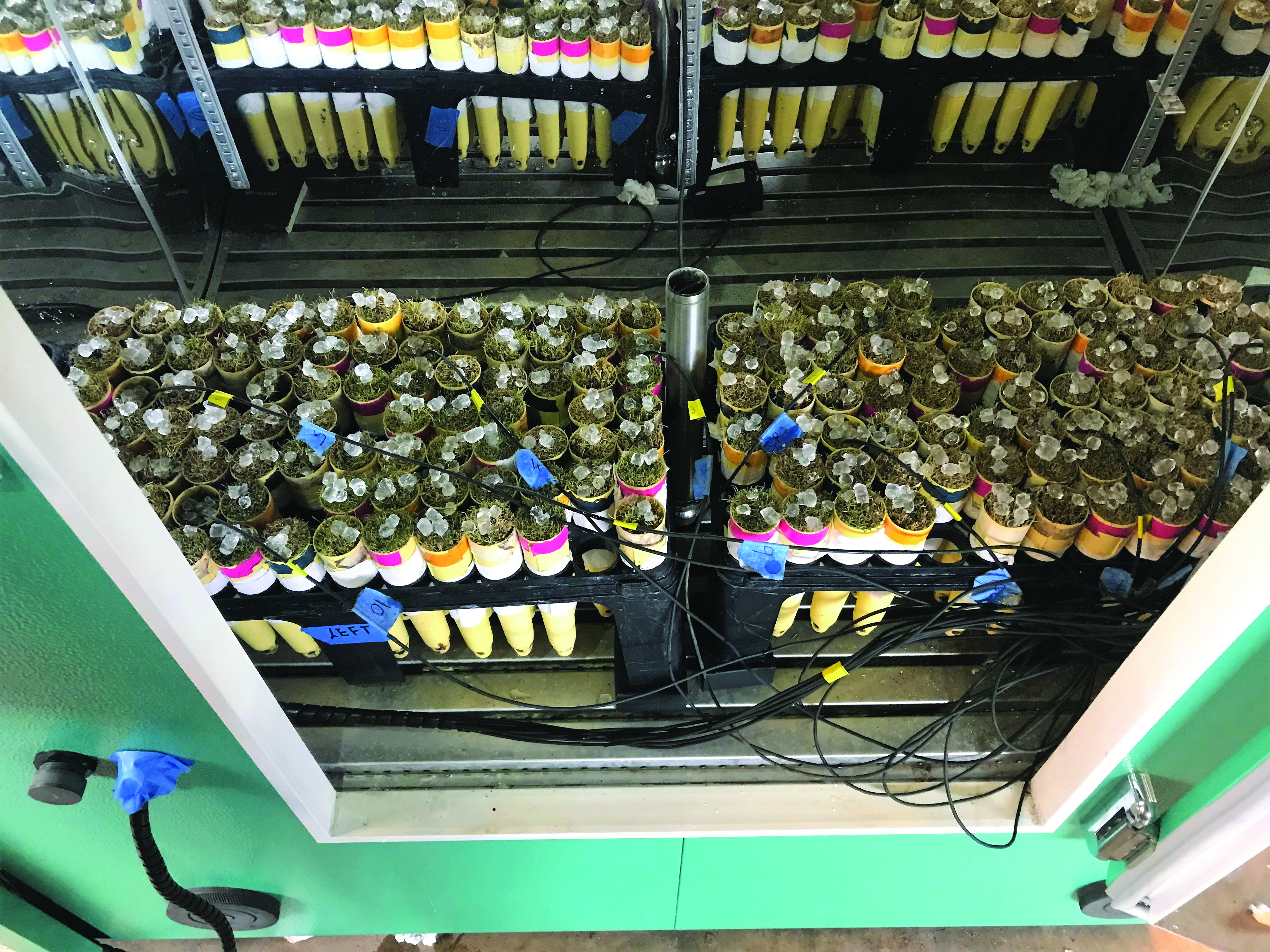
Photo 1. Conetainers were placed into a freeze chamber with 10 randomly placed thermocouple sensors inserted 1 inch into the potting medium. Ice chips are in all of the conetainers to prevent supercooling and induce freezing. (Photo: Lakshmy Gopinath, Ph.D.)
January: New freeze-tolerant bermudagrass
By Lakshmy Gopinath, Ph.D.; Justin Quetone Moss, Ph.D.; and Yanqi Wu, Ph.D.
⦁ Controlled environment evaluation of freeze tolerance provides valuable information for breeders to gauge the genetic gain in breeding winter-hardy bermudagrasses.
⦁ Tahoma 31 was the top-performing cultivar in this study.
⦁ OKC1406 had an LT50 value significantly lower than Tifway and similar to Tahoma 31, indicating superior freeze tolerance.
February: Dormant bermudagrass sprig establishment in the Transition Zone
By Matthew Herrmann; James Goatley, Jr.; David McCall, Ph.D., and Shawn Askew, Ph.D.
⦁ Dormant sprig date did not impact the long-term success of bermudagrass establishment.
⦁ Turf blanket and/or compost had a short-lived impact on bermudagrass establishment.
⦁ Sprigs harvested during spring transition may be sensitive to late freeze events.
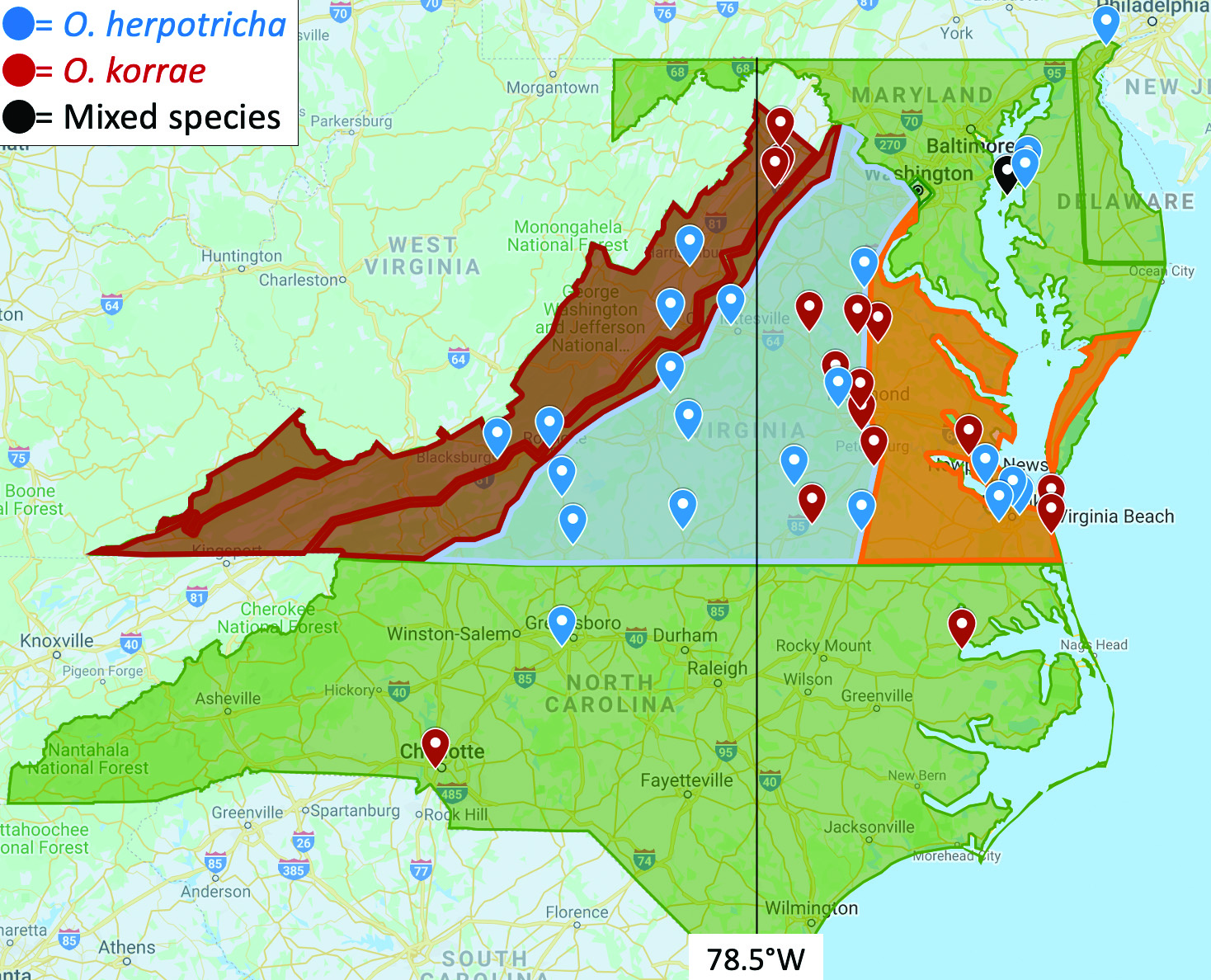
Figure 1. Ophiosphaerella spp. distribution in the mid-Atlantic. Species were determined using real-time PCR, and regions are color-coded: Red=VA Mountains; Blue=VA Piedmont; Orange=VA Coastal Plain; Green=DE, MD, and NC.
March: Bermudagrass recovery from spring dead spot
By Wendell Hutchens, Mike Goatley, Ph.D.; and David McCall, Ph.D.
⦁ O. herpotricha and O. korrae are two predominant species causing spring dead spot (SDS) in the mid-Atlantic region.
⦁ Two spring applications of urea (a total of 2 pounds N per 1,000 ft2) enhanced NorthBridge hybrid bermudagrass recovery from SDS in the first year.
⦁ Solid-tine aerification and verticutting did not improve SDS recovery in the spring.
April: What is the long-term impact of cultural inputs on annual bluegrass in golf greens?
By Kaiyuan Tang, Timothy T. Lulis, Travis R. Russell, and John E. Kaminski, Ph.D.
⦁ The long-term application of management programs influences annual bluegrass.
⦁ Reducing seasonal nitrogen can slow annual bluegrass.
⦁ Flurprimidol resulted in significant reductions in Poa annua.
⦁ Iron reduced annual bluegrass early in the study, but the long-term influence was low.
⦁ Where superintendents desire annual bluegrass, they should use higher seasonal N and Primo.
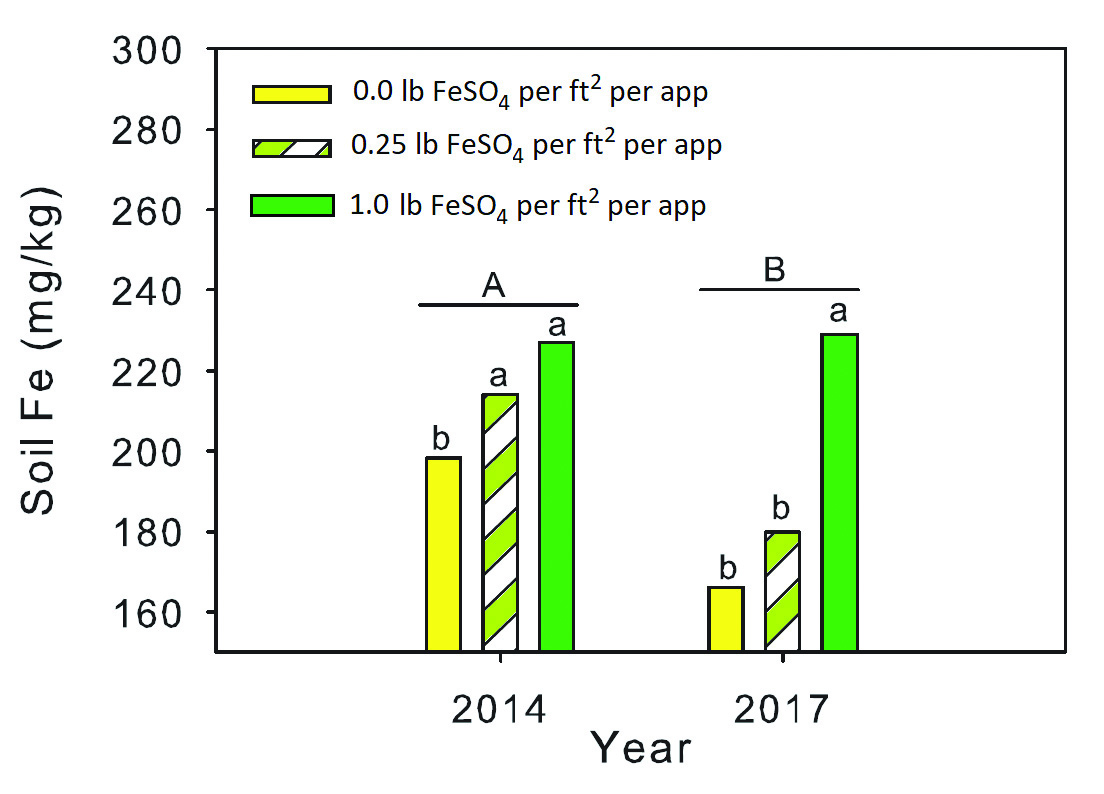
Figure 2. Soil iron as influenced by iron sulfate rate in 2014 and 2017. Means not sharing any letter are significantly different by the LSD test (P < 0.05). Capitalized letters above the underline represent significant effects between years.
May: What are the trends with annual bluegrass weevil for Eastern North America?
By Benjamin McGraw, Ph.D., and Albrecht Koppenhöfer, Ph.D.
⦁ The annual bluegrass weevil (ABW), Listronotus maculicollis, is the most difficult to control insect pest of short-mown golf course turf in the Northeastern U.S. and Eastern Canada.
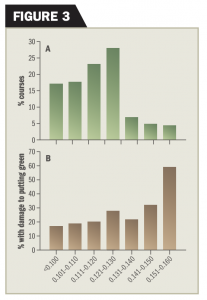
The percentage of surveyed golf courses was categorized by putting green mowing height (A) and those that experienced annual bluegrass weevil damage to putting surfaces (B) by mowing height.
⦁ We surveyed superintendents in the ABW area of impact to better understand the severity of the damage, prevalence of insecticide resistance and trends in management practices.
⦁ The average ABW population caused damage to 6.6 fairways, 5.7 tee boxes, and 6.4 greens/collars, amounting to 13.8 acres (5.2 ha).
⦁ On average, courses made 3.9 insecticide applications per year and spent $9,270 on ABW management.
⦁ Twenty percent of superintendents reported having a pyrethroid-resistant ABW population, though superintendents reported higher-than-average incidences from areas with long histories of managing ABW.
⦁ Resistant populations caused more damage than susceptible populations, reported higher average insecticide budgets, and were more likely to make more than five applications per year than susceptible courses.
⦁ Surveys indicated that 90 percent of turf managers used multiple monitoring tactics to better time and target controls despite the reliance on chemical controls.
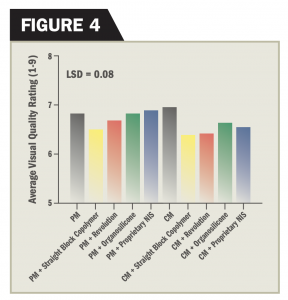
Graphic: Golfdom Staff
June: How surfactants influence PGR performance and turfgrass quality
By Mark Keck, Bill Kreuser, Ph.D.; and Brianna Hitt, Ph.D.
⦁ Primo MAXX mixed with surfactant did not increase the duration of suppression.
⦁ Primo MAXX + organosilicone and Primo MAXX + copolymer increased suppression.
⦁ Cutless mixed with the surfactant did not increase the duration.
⦁ Some PGR + surfactant combinations reduced visual quality ratings but never deemed unacceptable.
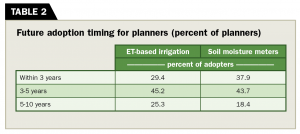
Graphic: Golfdom Staff
July: A close look at the economic benefits of water research
By Cole Thompson, Ph.D.; Donald Kridel, Ph.D.; and Mike Kenna, Ph.D.
⦁ The United States Golf Association (USGA) invested more than $45 million in turfgrass and environmental research from 1983 to 2020.

Graphic: Golfdom Staff
⦁ The USGA’s investment in research related to irrigation and water conservation returns approximately $730 million annually to the golf industry.
⦁ Research investment by governments and industry leaders is critical to growth of sustainability in the golf industry.
August: Fertilization needs of warm-season turfgrass irrigated with saline water
By Matteo Serena, Ph.D.; Bernd Leinauer, Ph.D.; Rossana Sallenave, Ph.D.; and Marco Schiavon, Ph.D.
⦁ Generally, subsurface drip-irrigated (SDI) grasses were slower to green up than the overhead-irrigated grasses.
![Turfgrass quality rating differences (1 = worst; 9 = best) as affected by four fertilizers (LSR, liquid slow-release; GSL, granular slow-release; UG, urea granular; UL, urea liquid) and nitrogen (bermudagrass [low = 4 lbs. N 1,000 ft–² year–¹; high = 6 lbs. N 1,000 ft–² year–¹]; seashore paspalum [low = 2 lbs. N 1,000 ft–² year–¹; high = 4 lbs. N 1,000 ft–² year–¹]). Each data point represents an average of nine seasons, two water qualities (potable [0.6 dS/m] and saline [3.1 dS/m]), and three replications. Bars followed by the same letter (Fisher’s protected LSD at α = 0.05) are not significantly different from one another (separately for each grass irrigation system).](https://www.golfdom.com/wp-content/uploads/2022/08/Figure-3_R.jpg)
Figure 6. Turfgrass quality rating differences (1 = worst; 9 = best) as affected by four fertilizers (LSR, liquid slow-release; GSL, granular slow-release; UG, urea granular; UL, urea liquid) and nitrogen (bermudagrass [low = 4 lbs. N 1,000 ft–² year–¹; high = 6 lbs. N 1,000 ft–² year–¹]; seashore paspalum [low = 2 lbs. N 1,000 ft–² year–¹; high = 4 lbs. N 1,000 ft–² year–¹]). Each data point represents an average of nine seasons, two water qualities (potable [0.6 dS/m] and saline [3.1 dS/m]), and three replications. Bars followed by the same letter (Fisher’s protected LSD at α = 0.05) are not significantly different from one another (separately for each grass irrigation system).
⦁ Sea Spray irrigated from the SDI system took 18, 28 and 15 days longer to reach 80 percent green cover in 2010, 2011 and 2012, respectively, than their sprinkler-irrigated counterparts.
⦁ The combination of Princess 77 and overhead irrigation reached 80 percent green cover 35 (in 2010), 34 (in 2011) and 12 (in 2012) days faster than SDI irrigated Princess 77.
⦁ Fertilization rate and type did not affect the summer turfgrass quality of Princess 77 irrigated from a sprinkler system throughout the research period reaching ratings of greater than seven during all three years, and researchers observed similar results for Princess 77 irrigated from an SDI system during 2010 and 2011.
⦁ During two of three summers, turf quality of the Sea Spray plots fertilized with either a liquid slow-release or liquid urea was lower than that of plots fertilized with a granular fertilizer.
⦁ The type of fertilizer applied affected fall color retention for 10 of 12 treatment combinations; however, no one fertilizer had the same impact for all treatments in November.
September: What the future looks like for snow mold management
By Paul Koch, Ph.D.
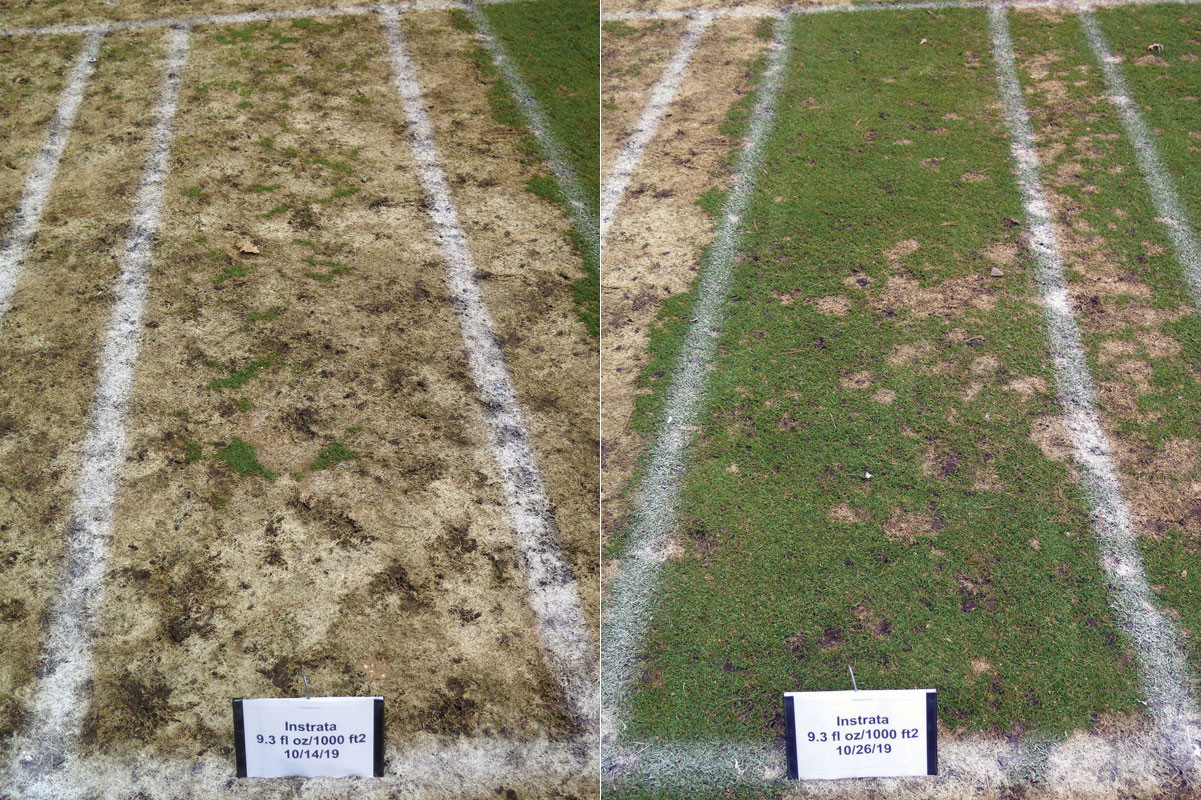
Photo 2. The cutoff between no snow mold suppression and excellent suppression can be very sharp, as evidenced by this picture from Timber Ridge GC in Minocqua, Wis., in the spring of 2020. (Photo: Paul Koch)
⦁ Data from across a nine-year span in Wausau, Wis., suggests that specific locations will experience less snow mold, although they are still prone to significant outbreaks from time to time.
⦁ Pink snow mold is much faster growing and it also grows at a wider range of temperatures than the gray and speckled varieties of snow mold, so chemistries such as iprodione, fludioxonil, prothioconazole and thiophanate-methyl provide effective control.
⦁ A model is under development that would predict the optimal timing of snow mold fungicides based on the local environmental conditions that fall.
⦁ There is a window of opportunity for snow mold control that is approximately 3 to 4 weeks long leading up to snow cover.
October: Autumn bermudagrass removal with glyphosate, fluazifop and mesotrione combinations
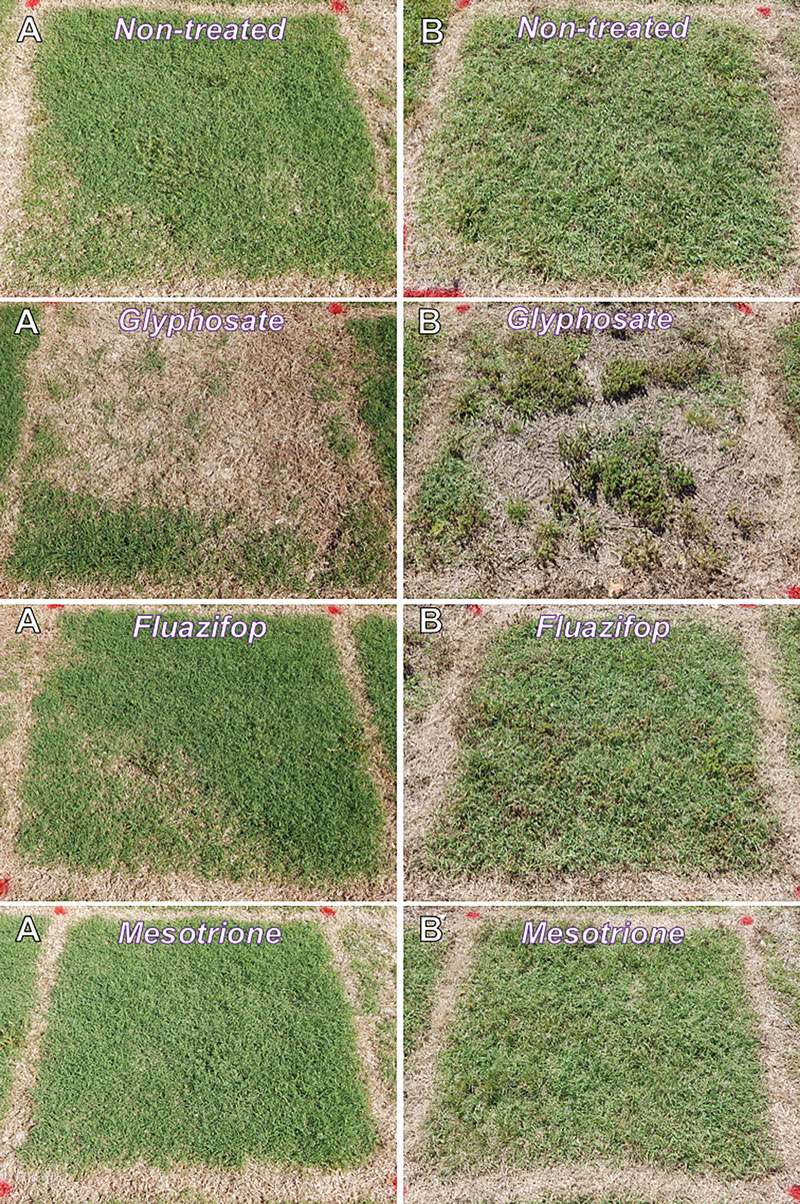
Photo 3. (A) ‘Midlawn’ bermudagrass plots and (B) common bermudagrass plots on June 12, 2014 (252 days after application on Oct. 3, 2013) recovering from autumn applications of glyphosate, fluazifop and mesotrione combinations. All other treatments containing glyphosate (not pictured) had a similar percentage of green cover as glyphosate plots and plots treated with fluazifop and mesotrione (not pictured) had a similar percentage of green bermudagrass cover as those treated only with fluazifop. (Photos: Jared Hoyle, Ph.D.)
By Ross Braun, Ph.D., and Jared Hoyle, Ph.D.
⦁ Only treatments containing glyphosate reduced the green cover of bermudagrass at each site the following year.
⦁ Across all ratings dates and locations, adding mesotrione, fluazifop or both to glyphosate did not further reduce green bermudagrass cover.
⦁ Overall, results indicate that a single autumn application of glyphosate before bermudagrass dormancy reduces bermudagrass cover the following spring.
⦁ The significant reduction in spring green-up may allow turf managers to make additional applications in the spring for increased control before spring establishment.
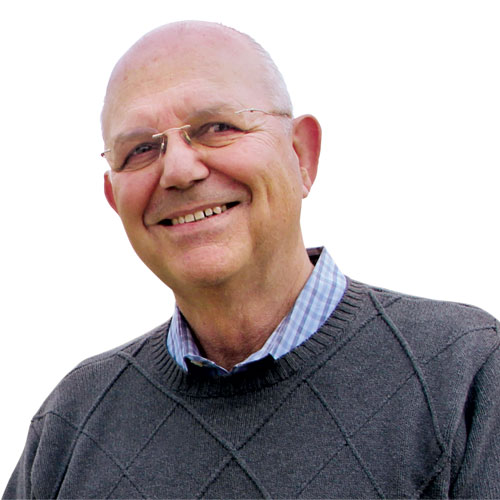
Photo: Mike Kenna, Ph. D.
Mike Kenna, Ph.D., is the retired director of research, USGA Green Section. Contact him at mpkenna@gmail.com.









